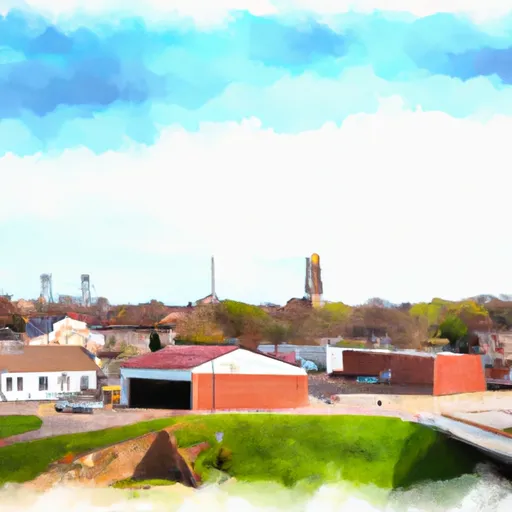-
 Snoflo Premium
Snoflo Premium
Get unlimited access to all our content
With no Ad interruptions! - Start Your Free Trial Login with existing account
Williamsburg
Eden Index
Climate
7.6
•
Recreation
3.4
•
Community
2.2
•
Safeguard
4.8/10

Williamsburg, Iowa is a picturesque town located in the heart of the Midwest. Known for its charming atmosphere and friendly community, Williamsburg experiences a typical Midwestern climate. Summers are warm and humid, with average temperatures ranging from the low 70s°F to the mid-80s°F. Winters are cold and snowy, with temperatures averaging in the 20s°F. Spring and fall bring mild temperatures, making them ideal seasons to explore the great outdoors.
The hydrology constituents in Williamsburg are primarily influenced by the English River, which flows through the town. The river provides opportunities for fishing, canoeing, and kayaking, allowing residents and visitors to immerse themselves in nature. Additionally, the area is dotted with numerous small lakes and ponds, perfect for boating and picnicking.
Outdoor recreation enthusiasts will find ample opportunities in Williamsburg. The town is surrounded by beautiful parks and trails, such as Lake Iowa Park and Tug Forks Wildlife Area, offering hiking, biking, and camping opportunities. Golf enthusiasts can enjoy a round of golf at the local golf course, while hunters can explore the nearby public hunting areas.
Overall, Williamsburg, Iowa offers a pleasant climate, scenic waterways, and a variety of outdoor recreation opportunities, making it an ideal destination for nature lovers and outdoor enthusiasts.
What is the Eden Index?
The Snoflo Eden Index serves as a comprehensive rating system for regions, evaluating their desirability through a holistic assessment of climate health, outdoor recreation opportunities, and natural disaster risk, acknowledging the profound impact of these factors on livability and well-being.
Climate Health Indicator (CHI): 7.6
Williamsburg receives approximately
939mm of rain per year,
with humidity levels near 84%
and air temperatures averaging around
10°C.
Williamsburg has a plant hardyness factor of
5, meaning
plants and agriculture in this region thrive during a short period during spring and early summer. Most
plants will die off during the colder winter months.
By considering the ideal temperature range, reliable water supplies, clean air, and stable seasonal rain or snowpacks, the Climate Health Indicator (CHI) underscores the significance of a healthy climate as the foundation for quality living.
A healthy climate is paramount for ensuring a high quality of life and livability in a region, fostering both physical well-being and environmental harmony. This can be characterized by ideal temperatures, reliable access to water supplies, clean air, and consistent seasonal rain or snowpacks.
Weather Forecast
Streamflow Conditions
Iowa
Area Rivers
Iowa
Snowpack Depths
Iowa
Reservoir Storage Capacity
Iowa
Groundwater Levels
Recreational Opportunity Index (ROI): 3.4
The Recreational Opportunity Index (ROI) recognizes the value of outdoor recreational options, such as parks, hiking trails, camping sites, and fishing spots, while acknowledging that climate plays a pivotal role in ensuring the comfort and consistency of these experiences.
Access to outdoor recreational opportunities, encompassing activities such as parks, hiking, camping, and fishing, is crucial for overall well-being, and the climate plays a pivotal role in enabling and enhancing these experiences, ensuring that individuals can engage in nature-based activities comfortably and consistently.
Camping Areas
| Campground | Campsites | Reservations | Toilets | Showers | Elevation |
|---|---|---|---|---|---|
| Jordan - Norfolk Lake | None | 683 ft | |||
| Lakeview Park - Mexico | None | 810 ft | |||
| Gunner Pool | 40 | 492 ft | |||
| Pine Ridge | 8 | 770 ft | |||
| Dry Fork | 18 | 763 ft | |||
| Woods Point - Norfolk Lake | 11 | 548 ft | |||
| Gamaliel - Norfolk Lake | None | 648 ft | |||
| Georges Cove - Norfolk Lake | None | 633 ft | |||
| Patrick Bridge Access - MDC | 12 | 613 ft | |||
| Blanchard Springs | 254 | 638 ft |
Nearby Ski Areas
Catastrophe Safeguard Index (CSI):
The Catastrophe Safeguard Index (CSI) recognizes that natural disaster risk, encompassing floods, fires, hurricanes, and tornadoes, can drastically affect safety and the overall appeal of an area.
The level of natural disaster risk in a region significantly affects safety and the overall livability, with climate change amplifying these risks by potentially increasing the frequency and intensity of events like floods, fires, hurricanes, and tornadoes, thereby posing substantial challenges to community resilience and well-being.
Community Resilience Indicator (CRI): 2.2
The Community Resilience Indicator (CRI) recognizes that education, healthcare, and socioeconomics are crucial to the well-being of a region. The CRI acknowledges the profound impact of these elements on residents' overall quality of life. By evaluating educational resources, healthcare accessibility, and economic inclusivity, the index captures the essential aspects that contribute to a thriving community, fostering resident satisfaction, equity, and social cohesion.

